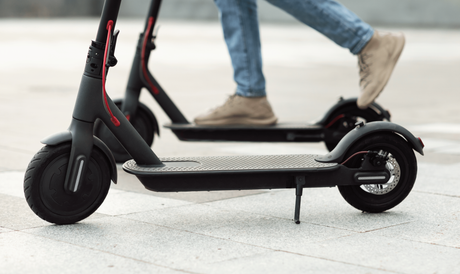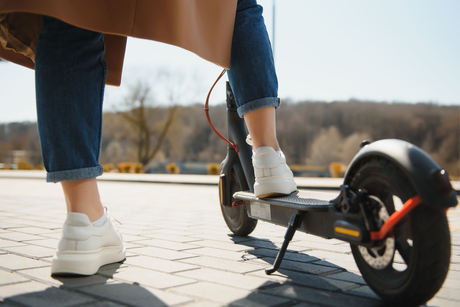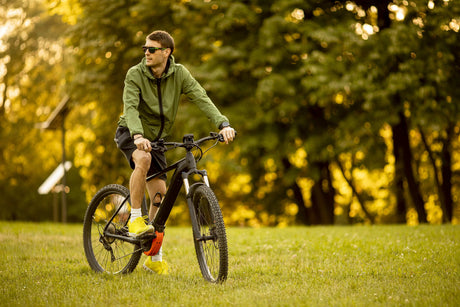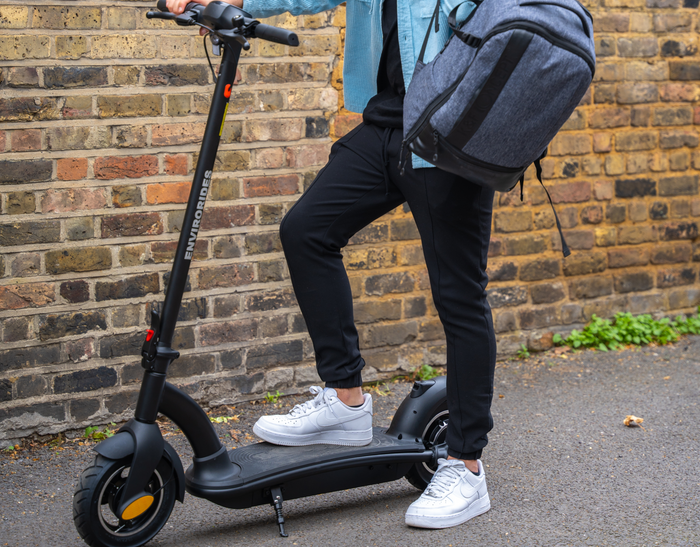Absolutely! Electric scooters are generally designed to handle uphill terrains. Many cities known for being electric scooter-friendly have hilly landscapes. For instance, San Francisco is famous for its steep streets, featured in various movies. Even in cities like Paris, where hills might not be the first thing that comes to mind, there are areas with slopes, like Montmartre.
The capability of an electric scooter to go uphill depends on factors like overcoming gravity, friction, and the weight of the rider. In essence, electric scooters are built to navigate inclines effectively. So, if you're in a place with hills, rest assured that your electric scooter should be up to the task!
Technical Considerations for Electric Scooter Uphill Travel
Overcoming Gravity, Friction, and Weight:
Ascending inclines is no small feat for electric scooters, and their ability to conquer uphill challenges revolves around tackling three key factors: gravity, friction, and the weight of the rider.
Gravity:
Gravity is a constant force pulling objects downward, and when it comes to uphill travel, scooters must work against this force. Modern electric scooters incorporate powerful motors that generate sufficient torque to counteract gravity, allowing riders to ascend inclines without undue strain on the scooter's performance.
Tyres and Friction:
The size, material, and grip of your electric scooter's tyres determine its ability to climb hills. Larger wheels make uphill climbs easier, while tire material affects rolling resistance, impacting the scooter's ability to ascend smoothly. Adequate traction is crucial; without it, powerful scooters may struggle on hills. Our electric scooters feature large tires that have brilliant grip which can ensure you have a smooth ascent on different terrains.
Weight of the rider:
Consider the weight capacity of your electric scooter, as it plays a crucial role in determining its uphill performance. The weight of the rider creates resistance, impacting the scooter's ability to climb hills. While a scooter might effortlessly ascend with a smaller rider, it could face challenges with a larger or heavier rider. Opt for a scooter with a weight capacity exceeding your own.
Consider how well your electric scooter can balance:
Achieving a seamless uphill experience requires a delicate balance between the forces at play. That’s why it's best to consider your suspension system on your electric scooter. When riding on an incline, the majority of the rider's weight shifts toward the back wheel. If the scooter's suspension system lacks sophistication, this weight can be transferred onto the wheel, potentially causing the scooter's base to press against the wheel.
Such a scenario significantly impacts performance, leading to increased wear and tear. To prevent this, it's advisable to opt for a scooter equipped with an advanced suspension system. A more sophisticated suspension system helps distribute the rider's weight evenly, facilitating smoother and uninterrupted riding, even when navigating uphill terrain.
Motor Power and Torque:
When determining the power needed for an uphill journey, consider the strength of your electric scooter's motor and torque. High-performance motors with ample torque are essential for conquering uphill slopes. These motors provide the necessary power to propel the scooter upwards, maintaining a consistent speed even in challenging terrain.
Tips to Ride an Electric Scooter Uphill
Have a fully charged electric Scooter battery
Ensure that your electric scooter is fully charged before embarking on routes with hills. Riding uphill demands higher motor power, as the scooter needs extra strength to pull you against gravity. This uphill journey can lead to faster battery depletion, underscoring the importance of a full charge.
Ensure your positioning on your electric scooter is right
Maintaining the right posture is crucial when tackling uphill rides on your electric scooter. To ensure safety, avoid slouching or bending over the handles. Position yourself correctly by planting your feet securely on the scooter's deck and maintaining a well-balanced stance. Engage your core muscles for stability, allowing you to stand tall.
Additionally, bend your knees slightly during the climb to reduce your overall weight. This stance not only aids in maintaining balance but also facilitates smoother forward movement, alleviating strain on the electric scooter's motor.
Accelerate!
When navigating a steep incline on your electric scooter, aim for a brisk yet safe pace. Optimal speed assists the scooter in efficiently pulling you uphill without overburdening its motor and tires. However, exercise caution and refrain from accelerating excessively when pedestrians or vehicles are present. Stay mindful of your surroundings and avoid high speeds in such scenarios. Reserve acceleration for downhill sections to ensure a safe and controlled riding experience.
Gain Momentum
Before tackling a slope, aim to build up some momentum to provide an additional boost to your electric scooter. This practice is particularly beneficial for hills exceeding a 15% incline or for longer ascents. Ensure you accelerate before the climb to generate the necessary momentum. Gaining speed in this manner not only aids in a quicker and easier ascent to the top but also requires vigilant awareness of your surroundings to prevent accidents.
What's the best electric scooter for hills?
The suitability for hill climbing varies based on the electric scooter's features. The best electric scooter for uphill challenges boasts a robust suspension system to absorb bumps, a powerful motor, and large tires with excellent grip and tread depth. Our EVR Pro exemplifies all these features, boasting a formidable 3200W power and achieving an impressive top speed of 55 mph!
FAQs
Can electric scooters go downhill?
Yes, they can but while riding downhill, some riders have a habit of focusing on their wheels, which can pose a danger. It's important to avoid this practice and instead develop the habit of looking far ahead. By looking ahead, you can anticipate the terrain and spot potential obstacles, enhancing safety.
An essential tip to bear in mind is to apply the brakes as you approach a turn or corner when going downhill.
Decreasing your speed before turning enhances your ability to navigate the scooter smoothly. Skilful speed modulation helps eliminate excessive force that could otherwise lead to the scooter spiralling onto the road.
However, it's crucial to release the brakes as you enter the corner or turn to prevent wheel lock and skidding. Prioritise practising this manoeuvre on your electric scooter before hitting the road to ensure a safe and controlled experience on the streets.
How steep can electric scooters go?
The majority of electric scooters can easily handle inclines ranging from 10 to 15 degrees. More powerful models can effortlessly ascend slopes of up to 20 degrees. However, tackling inclines steeper than 20 degrees might pose a challenge for most electric scooters.
Do electric scooters tip over when going uphill?
They can and that’s why you should also ensure whether you’re going uphill or downhill that you’re always pointing straight up or down otherwise you risk tipping over.




